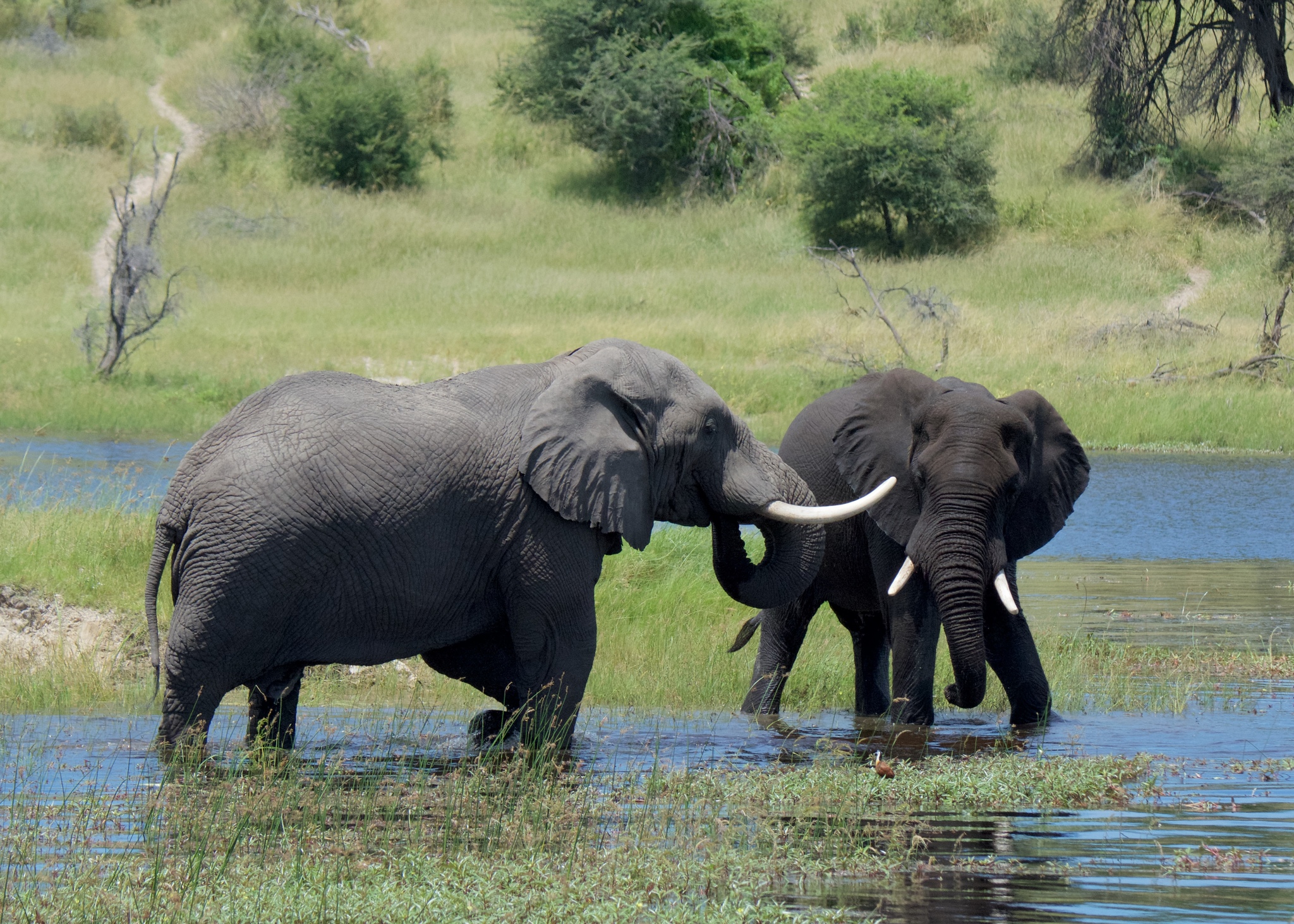- Home
- Conservancy
- African elephant
Description
The African elephant is the largest living terrestrial animal, while the forest elephant is the third largest. Their thickset bodies rest on stocky legs, and they have concave backs. Their large ears enable heat loss.The upper lip and nose form a trunk. The trunk acts as a fifth limb, a sound amplifier, and an important method of touch. African elephants' trunks end in two opposing lips,[6] whereas the Asian elephant trunk ends in a single lip.
In L. africana, males stand 3.2–4.0 m (10–13 ft) tall at the shoulder and weigh 4,700–6,048 kg (10,360–13,330 lb), while females stand 2.2–2.6 m (7–9 ft) tall and weigh 2,160–3,232 kg (4,762–7,125 lb); L. cyclotis is smaller with male shoulder heights of up to 2.5 m (8 ft).[8] The largest recorded individual stood four metres (13.1 ft) at the shoulders and weighed 10 tonnes
Fun Facts
African elephant societies are arranged around family units. Each family unit is made up of around ten closely related females and their calves and is led by an older female known as the matriarch. When separate family units bond, they form kinship or bond groups. After puberty, male elephants tend to form alliances with other males. Elephants are at their most fertile between the ages of 25 and 45. Calves are born after a gestation period of nearly two years.
The calves are cared for by their mother and other young females in the group, known as allomothers. Elephants use some vocalisations that are beyond the hearing range of humans, to communicate across large distances. Elephant mating rituals include the gentle entwining of trunks.African elephants are highly intelligent,and they have a very large and highly convoluted neocortex, a trait they share with humans, apes and some dolphin species. They are amongst the world's most intelligent species. With a mass of just over 5 kg (11 lb), elephant brains are larger than those of any other land animal, and although the largest whales have body masses twenty-fold those of a typical elephant, whale brains are barely twice the mass of an elephant's brain.
The elephant's brain is similar to that of humans in terms of structure and complexity. For example, the elephant's cortex has as many neurons as that of a human brain,suggesting convergent evolution. Elephants exhibit a wide variety of behaviors, including those associated with grief, learning, allomothering, mimicry, art, play, a sense of humor, altruism, use of tools, compassion, cooperation, self-awareness, memory and possibly language. All point to a highly intelligent species that is thought to be equal with cetaceans, and primates.
.jpg)
.jpg)
.jpg)
